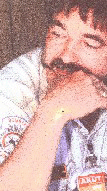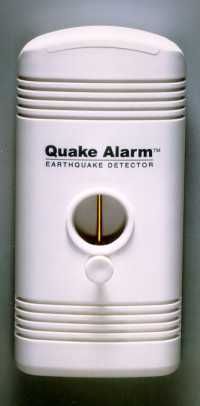
 Click on this Quake Alarm and you will link to a doc. from the Office of Energency Services, in Chile; concerning the Quake Alarm. Click on this Quake Alarm and you will link to a doc. from the Office of Energency Services, in Chile; concerning the Quake Alarm.

Thompson Lang
'the 911 monster'

villains
versus
heros

Mesothelioma victims click on the asbestos sign, for help

|
| |
 |
Study |
 |
Disaster Case Study #1
This article is a digest taken from an
original study by Louise K. Comfort, Graduate School of Public and
International Affairs, University of Pittsburgh, Pittsburgh, PA, USA
In societies vulnerable to
seismic risk, severe earthquakes represent the civilian equivalent of war,
a massive shock to the entire technical, organizational, economic,
political, and social system. How a complex, sociotechnical system
responds to this shock provides valuable insight into its likely evolution
to the next phase in its performance, and its likely actions to prevent
recurrence.
Ironically, emergency response
preparations designed to ensure careful response in smaller scale
emergencies will inhibit the rapid transition to the kind of
interorganizational, interjurisdictional system needed for a disaster
event of larger magnitudes.
Response systems in most major
disasters, such as an earthquake, will be overwhelmed and tenuous,
at best. The manner and speed in which the response systems evolve has a
critical effect on performance in the search and rescue operations, and,
therefore, the number of lives saved from collapsed buildings. "Bias
of choice" interactions and non-actions by government
organizations supposed to handle a major disaster will and do
kill people.
Being able to perform rescue
work during the first hours after a major disaster are of paramount
importance. Delays and prevention of rescue by government
organizations put in charge of the rescue efforts, such as Fire
Departments, Urban Heavy Rescue, Police, etc, and their 'bias of
choice' will have devestating results should a major disaster hit
your area. See the table below from Kobe, Japan in 1995.
Number of Live Rescues, by Day of Rescue
|
| Date |
Jan. 17 |
Jan. 18 |
Jan. 19 |
Jan. 20 |
Jan. 21 |
| Total rescued |
604 |
452 |
408 |
238 |
121 |
| Total who lived |
486 |
129 |
89 |
14 |
7 |
| Percent rescued who lived |
80.5 |
28.5 |
21.8 |
5.9 |
5.8 |
|
(Source: Kobe Fire
Department, "The Great Hanshin-Awaji Earthquake [Kobe City Area]:
Record of Fire Fighting in Kobe. 1995:12.)
The figures reveal a
startling drop in the proportion of persons who lived after being rescued
from collapsed buildings and underscore the critical issue of timeliness
in emergency response. This same pattern of steep decline by day of rescue
has been confirmed in studies of other disaster response operations. The
cost in timeliness, measured in loss of lives, is sobering, and is
directly related to the functioning of the infrastructure that does the
decision making and action - government organizations.
For example (from Kobe,
Japan), in a major disaster a fire department might operate on a
"doctor-car" system for emergency medical services. When a
citizen calls the emergency number, 911, the fire department responds by
dispatching a team of paramedics that can administer first aid. If an
injury is involved, the fire department also calls the local hospital,
which dispatches a physician trained in emergency medicine. The firemen,
even though they may be "first on scene," are legally prevented
from administering any emergency medical procedure unless it is supervised
by a licensed physician. While this procedure works well for traffic
accidents or small fires, it hinders delivery of emergency medical
services in large-scale disasters and it costs human lives!
While the toll in lives of
this practice cannot be calculated by any exact measure, informed
paramedics and physicians have been sobered by its consequences at major
disasters and concur that it must be changed!
The size, shape, and timing
with which the rescue system evolves are critical to defining not only the
losses endured in the given event, but also the scope of
interorganizational action required for reconstruction and recovery.
Results from a recent study by Louise K. Comfort, Graduate School of
Public and International Affairs, University of Pittsburgh, Pittsburgh,
PA, USA are significant for at least four reasons.
|
- It explores means of facilitating the emergence of self organization in disaster environments in order to reduce losses in lives and property in disaster-afflicted communities.
- It presents a preliminary methodology for assessing rapidly evolving response systems following disaster.
- It offers suggestions for continuing research on complex, adaptive systems (CAS) in disaster environments.
- Finally, the findings contribute to our theoretical understanding of the dynamics of CAS and institutional change.
|
Kobe, Japan
The record reveals the gaps in
information that seriously affect the coordination within and between
jurisdictions. For more than four hours, neither the Hyogo Prefectural
Government nor the National Fire Defense Agency in Tokyo had a clear
picture of the degree of destruction and damage in Kobe. Constrained from
action by the existing law until a request for assistance had been
received from the City of Kobe, which is next to impossible after a major
disaster, these governmental agencies did not enter the response system
until more than four hours after the initial shock. In further irony,
existing law kept the dogs from the French and American Rescue
teams in quarantine, not allowing them to enter response operations until
the fourth day after the earthquake when they extricated dead bodies,
instead of living people. These conditions indicate the perverse effects
of law, intended to protect citizens, in restricting the capacity of
public managers to carry out their mission under dynamic conditions.
|
|
Return to the top
Main
Site Map
Credentials
Knowledge
xxxx
Triangle Of Life
xxxx
Videos
ARTI Store
The American Rescue Team International
PO Box 237, 236 West Portal Ave, San Francisco, CA, 94127, USA
Tel 1-415-533-2231
Email: amerrescue@aol.com
© ARTI,Available to those who support our humanitarian work and standing up to those who defamed us for revenge. ARTI endorses the triangle of life and scorn those who endanger children's lives by promoting 'duck and cover.
Doug Copp, Home address: 563 Charlote St, Sydney, Nova Scotia, Canada, B1P-1E6, Home Phone 1-902-567-1227,Personal Email: amerrescue@aol.com, 1985 - 2005 All rights reserved. Reproduction or use in whole or
in part without the express permission of the copyright holder is strictly
forbidden. Just ask!!
American Rescue Team International is a 501(c)3 not for profit organization. Organized and duly constituted under the laws of the State of California since 1985. At international disasters we were called the `American Rescue Team' because we were the only Americans saving lives at foreign disasters, the name stuck!
Site maintained by ARTI
For any questions regarding this website please email
webmaster@amerrescue.org
|
|
|


